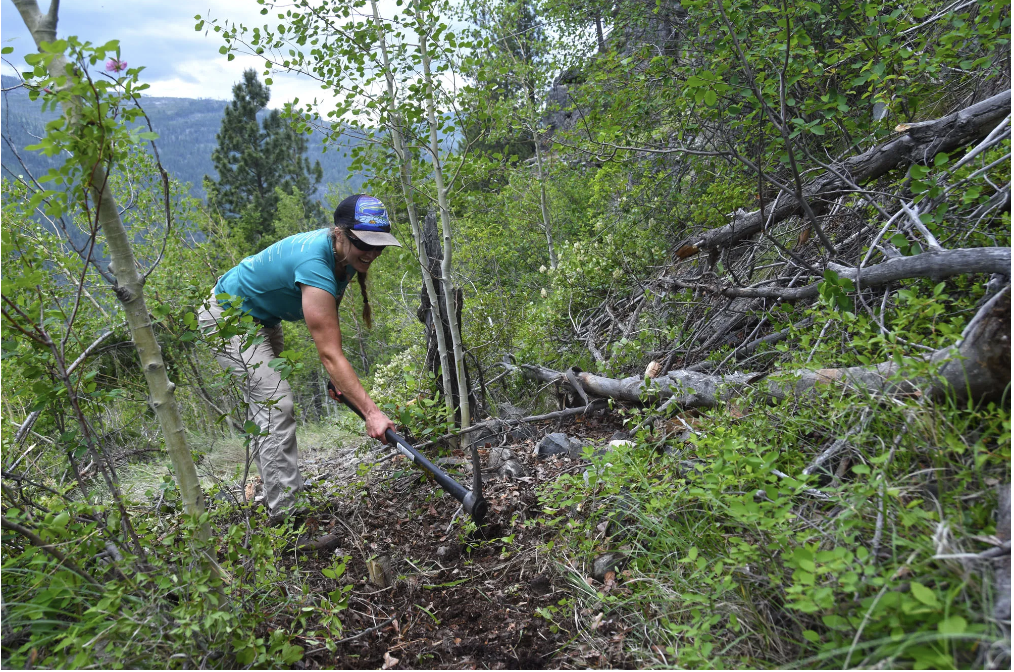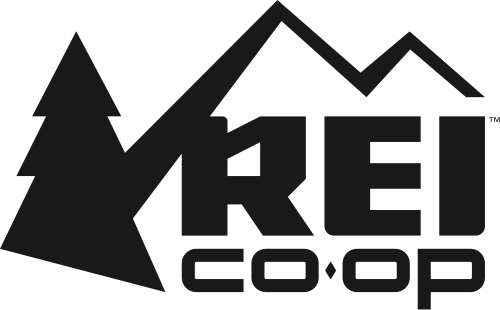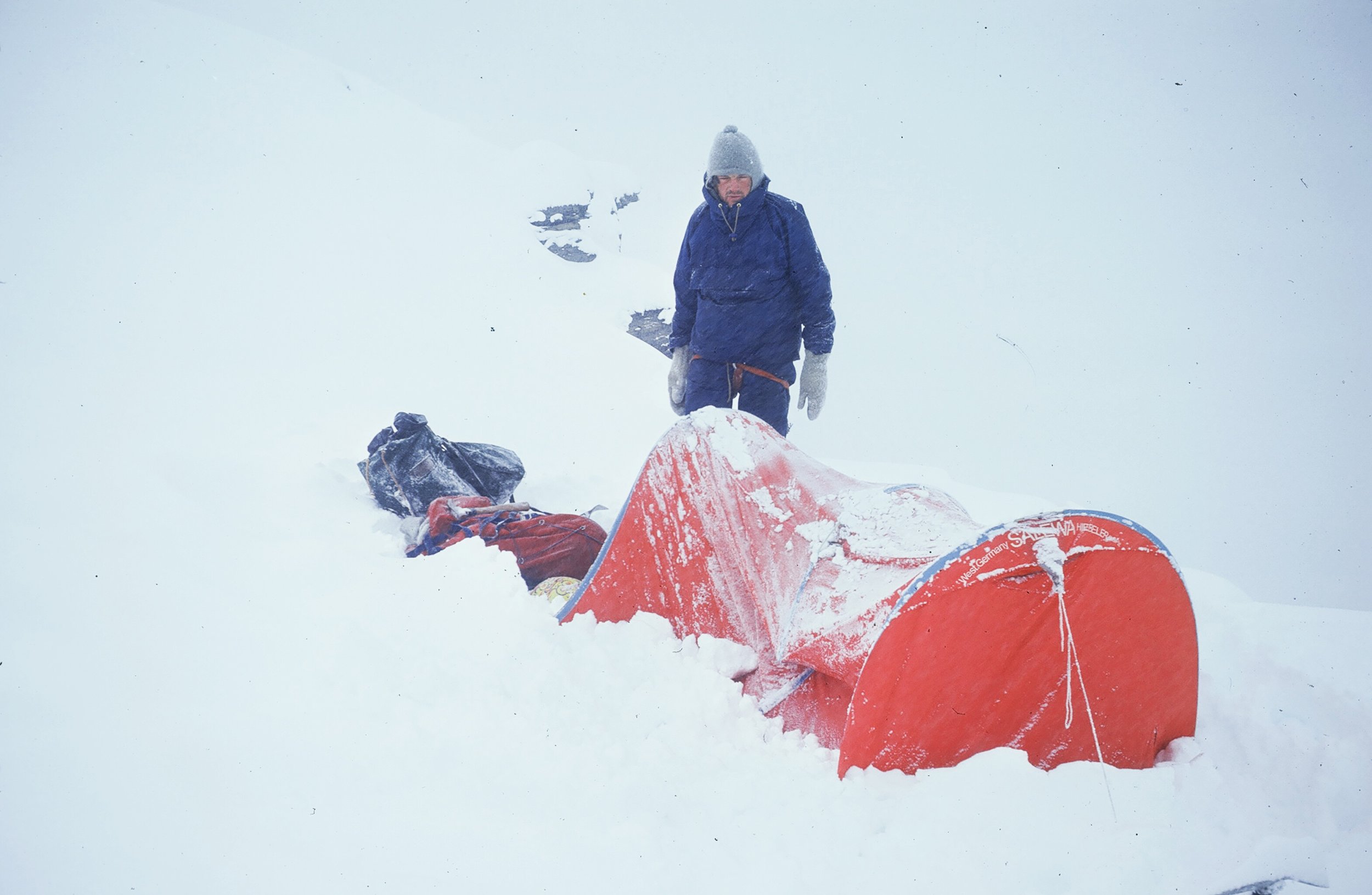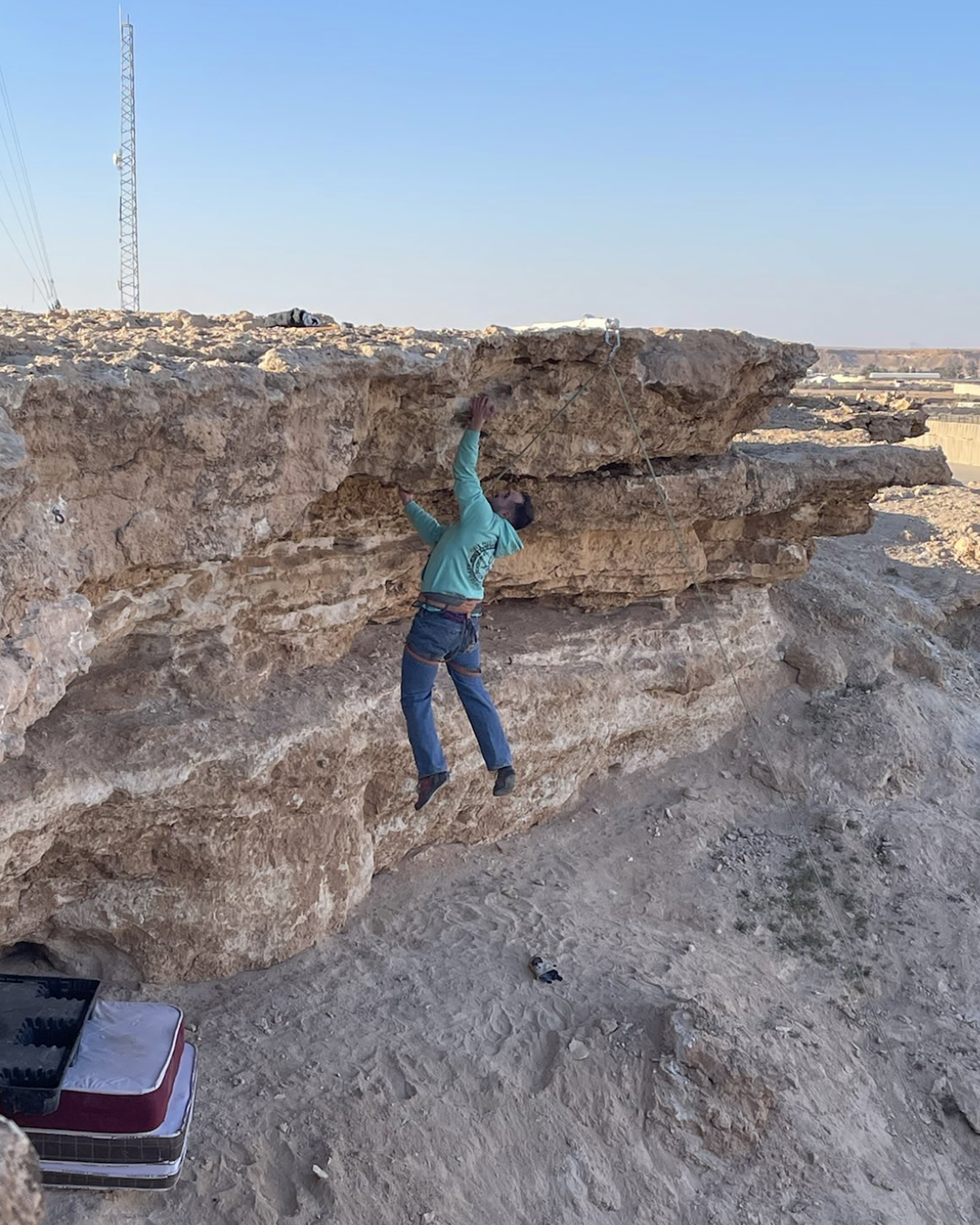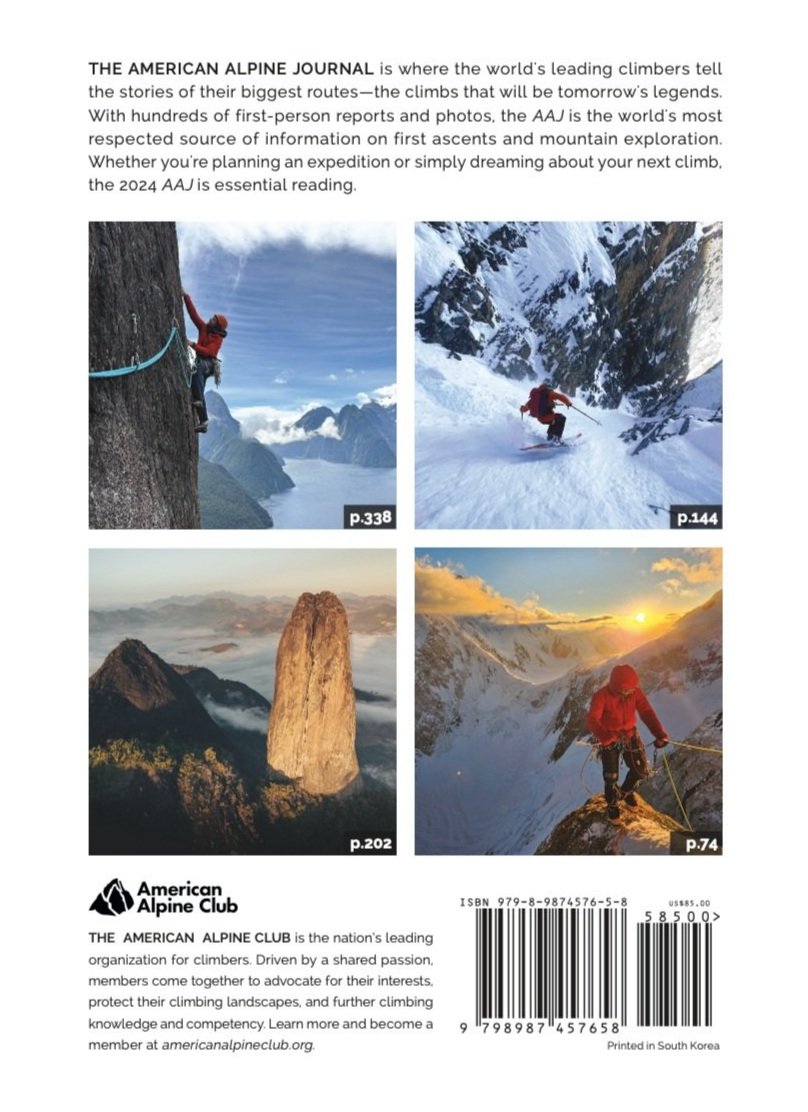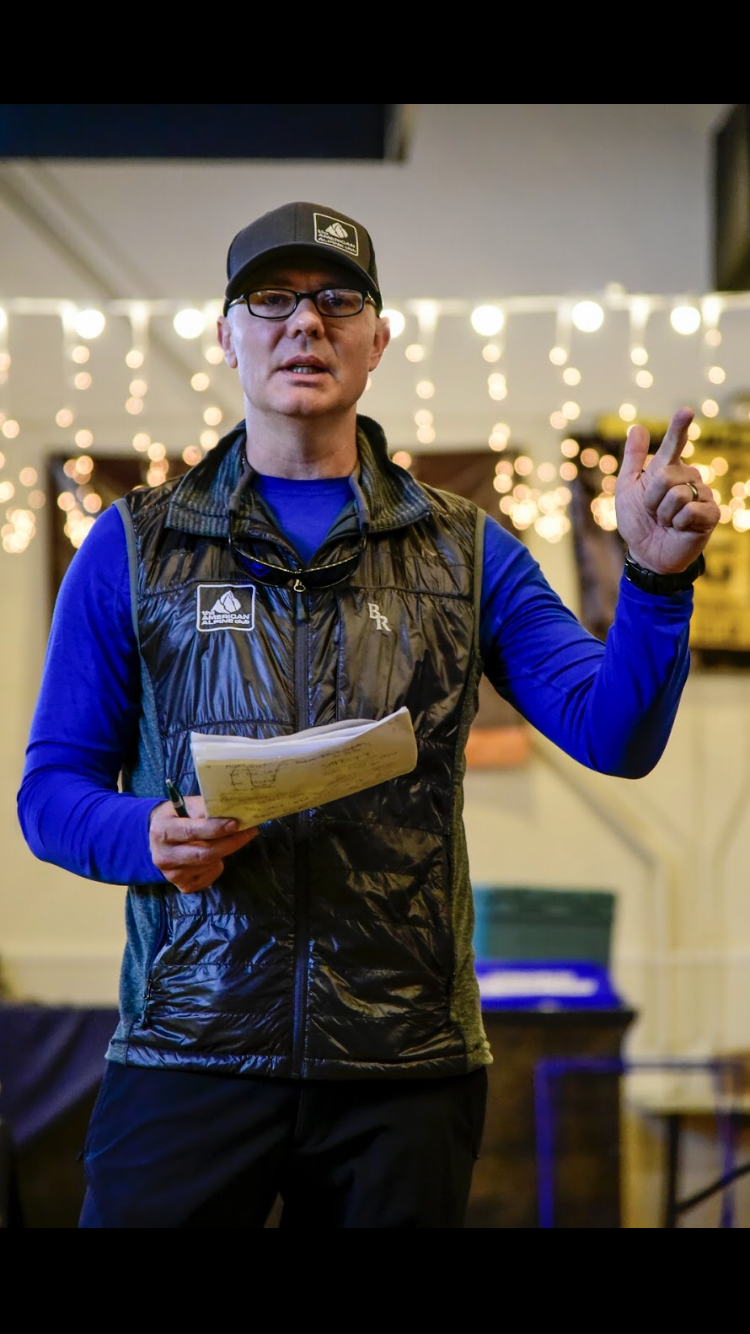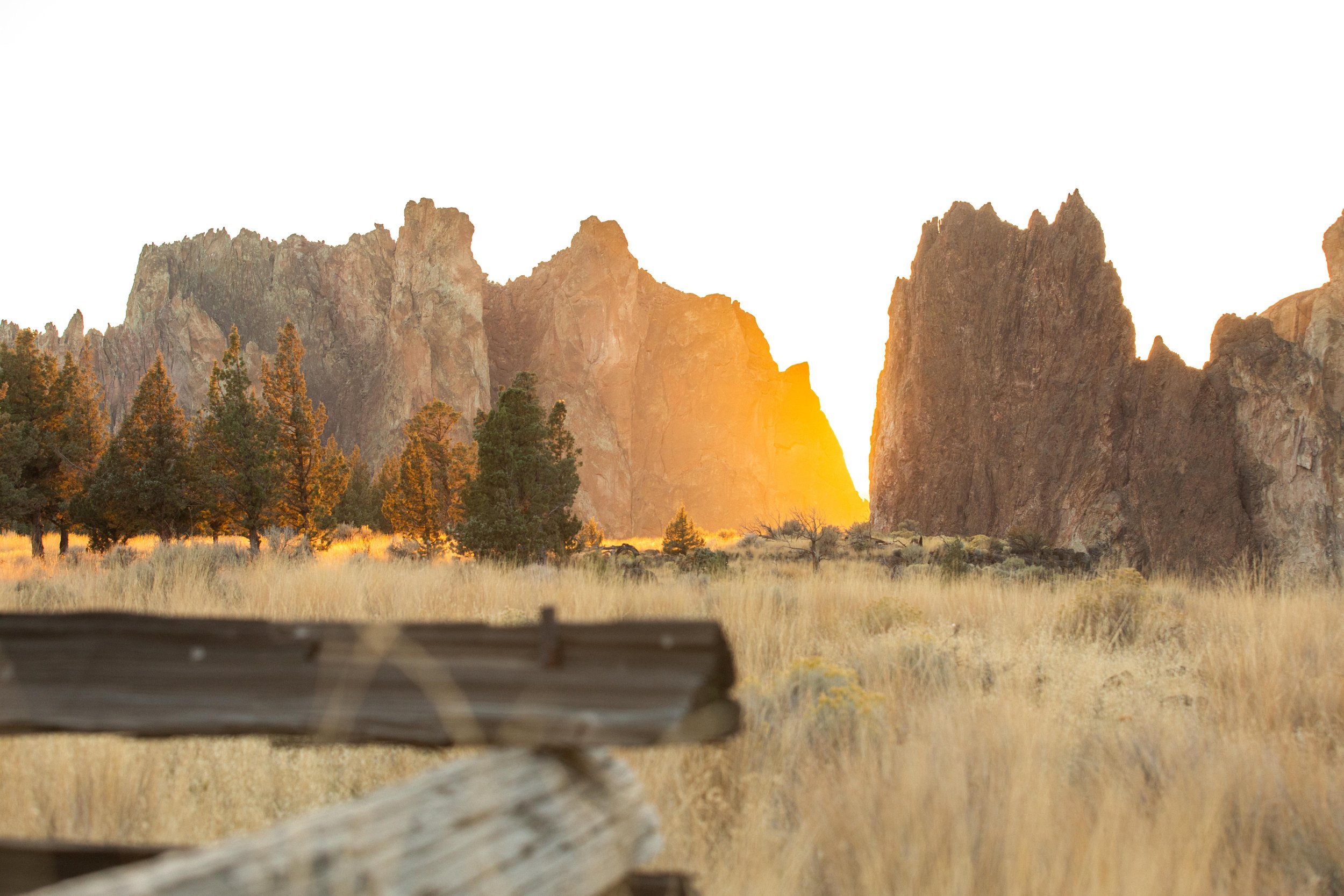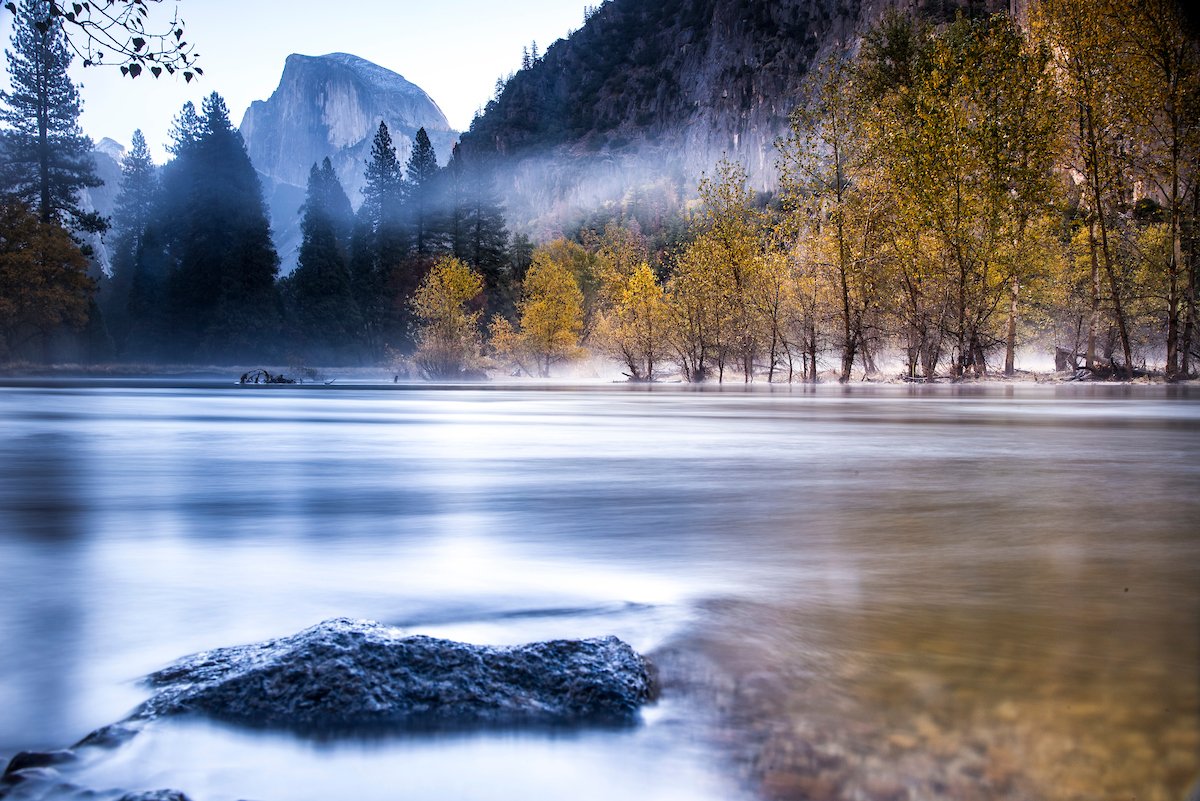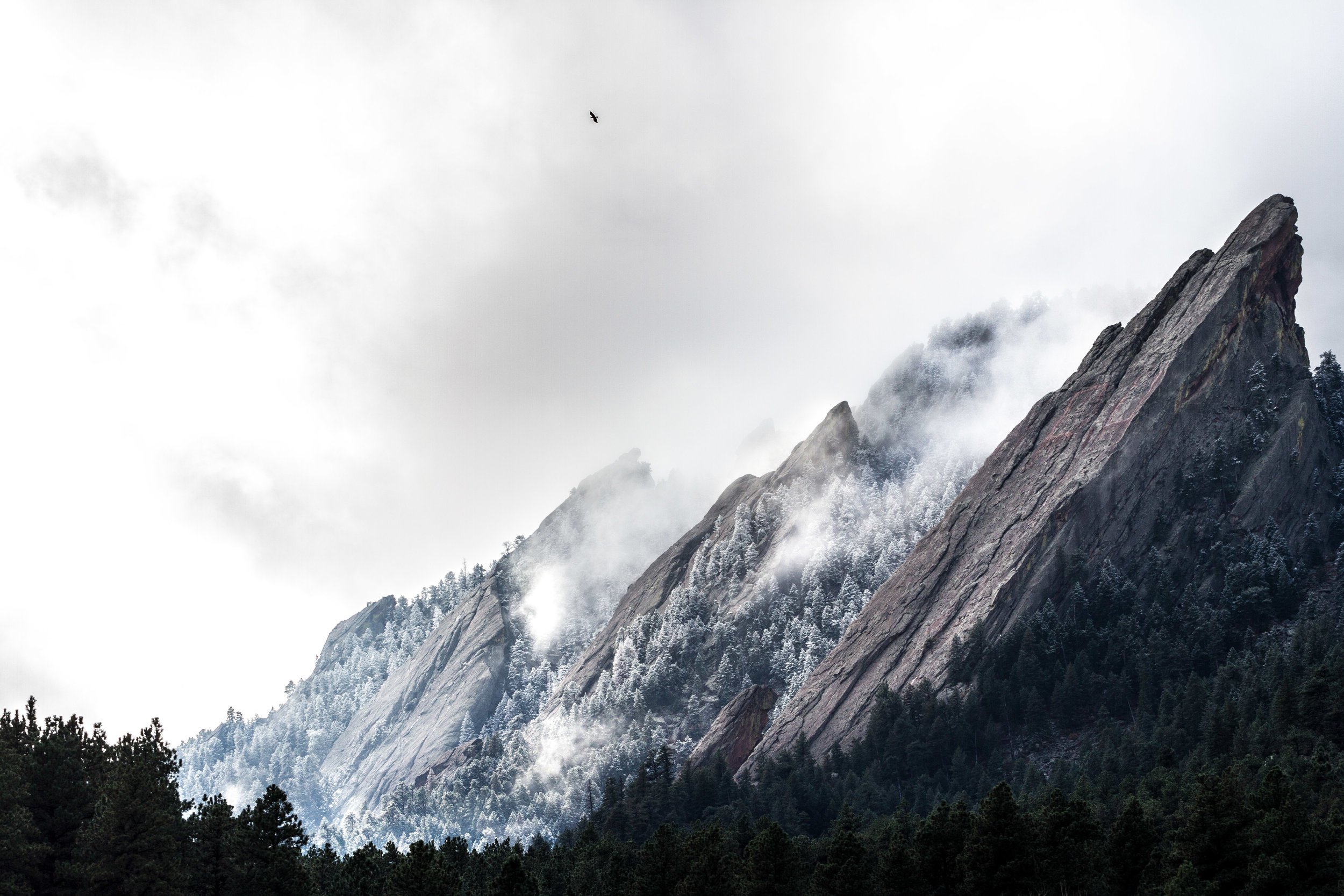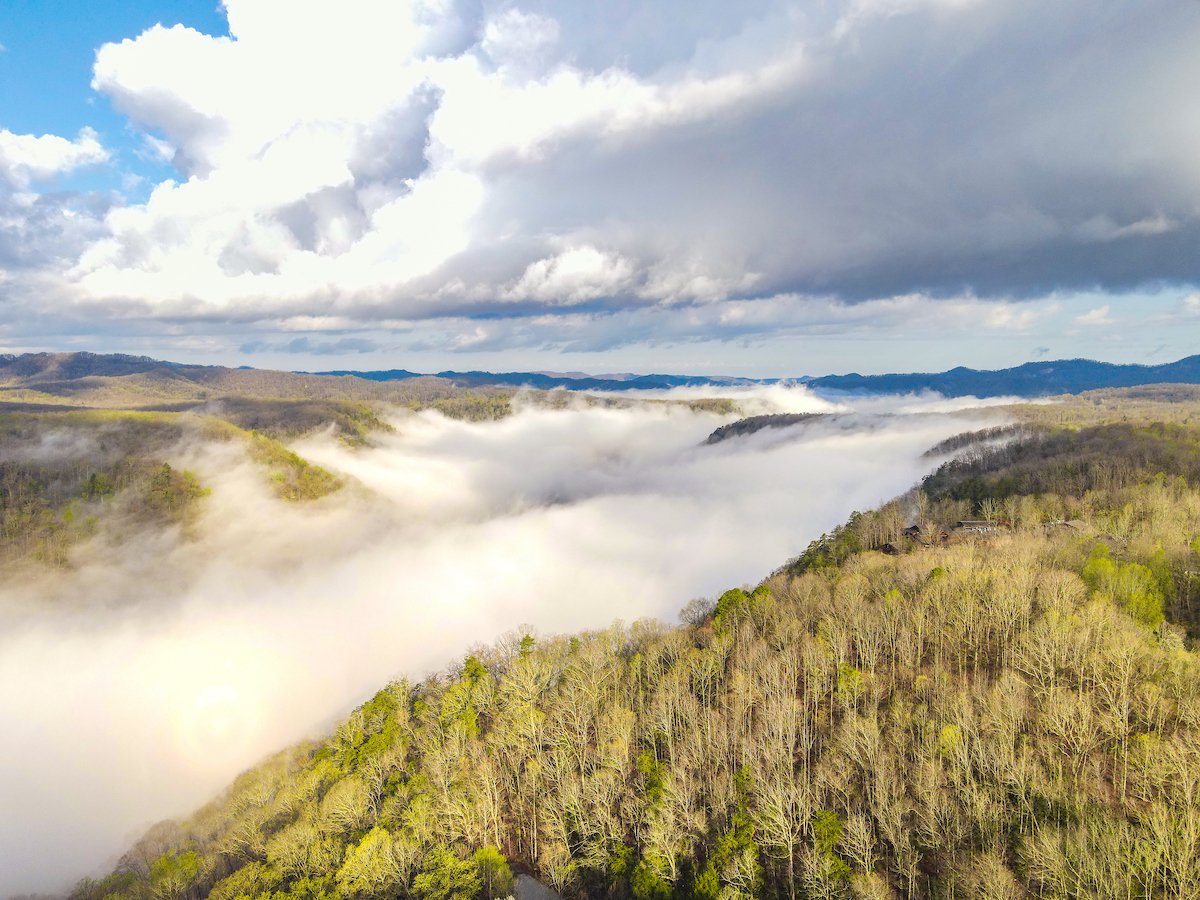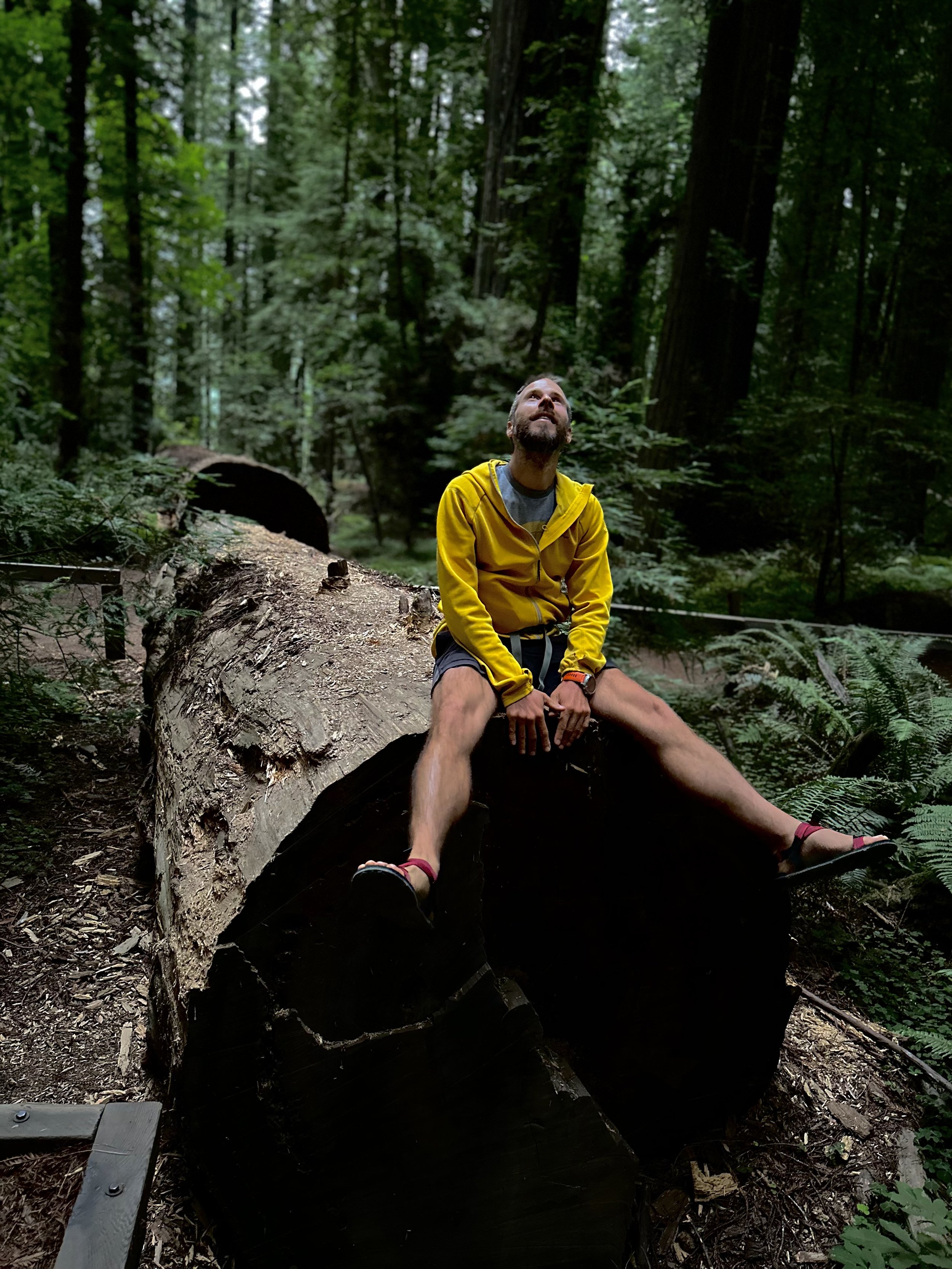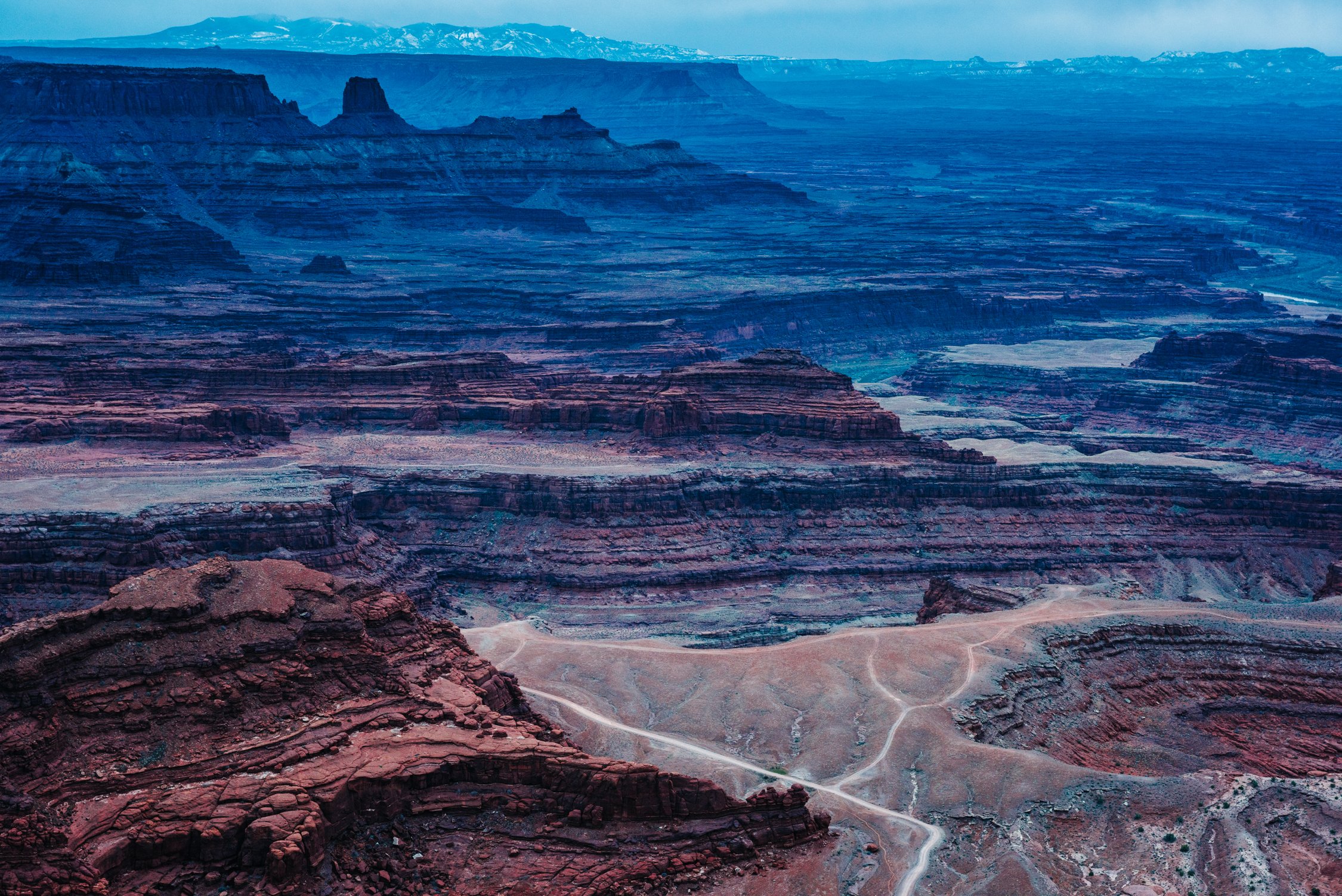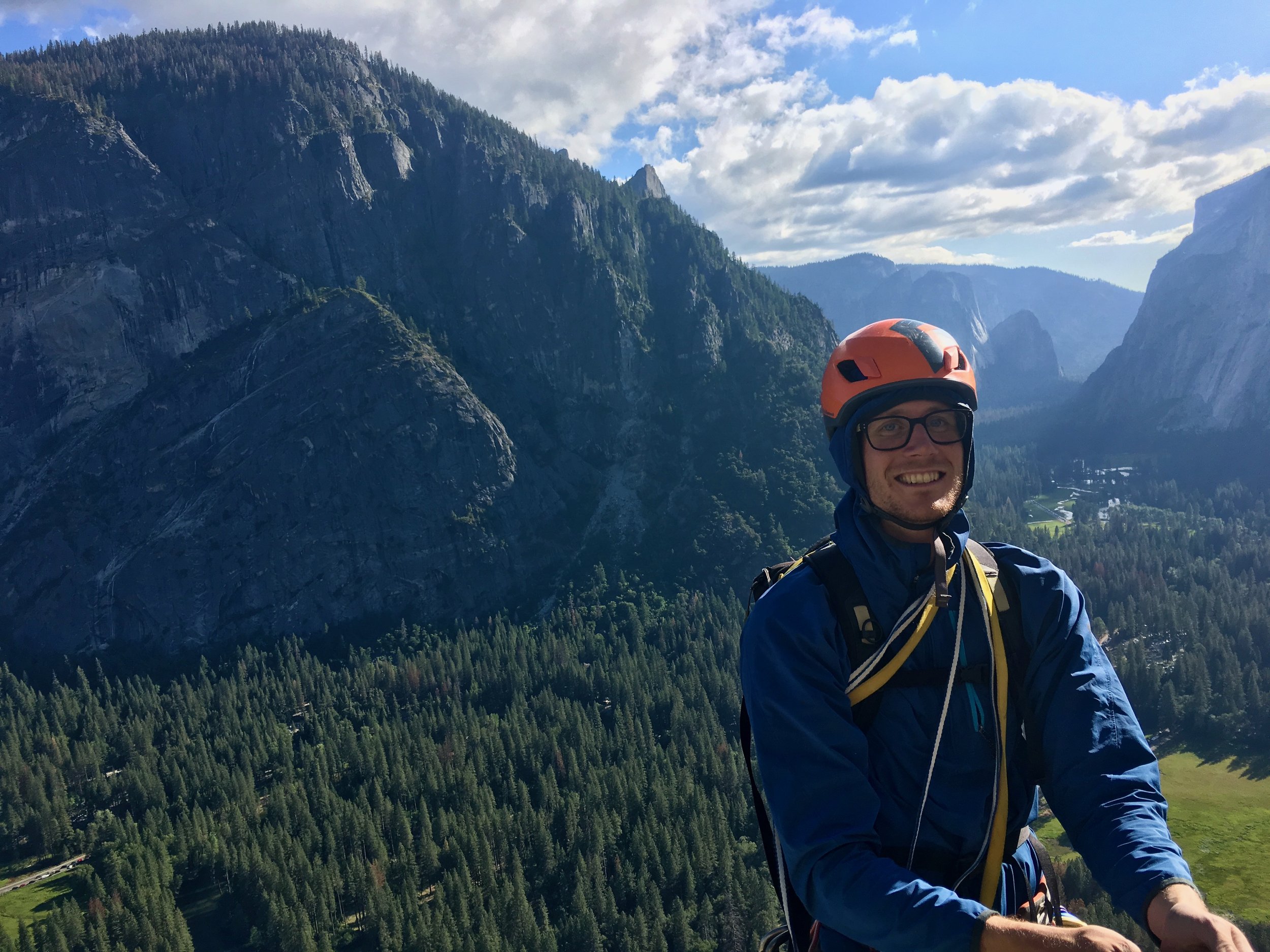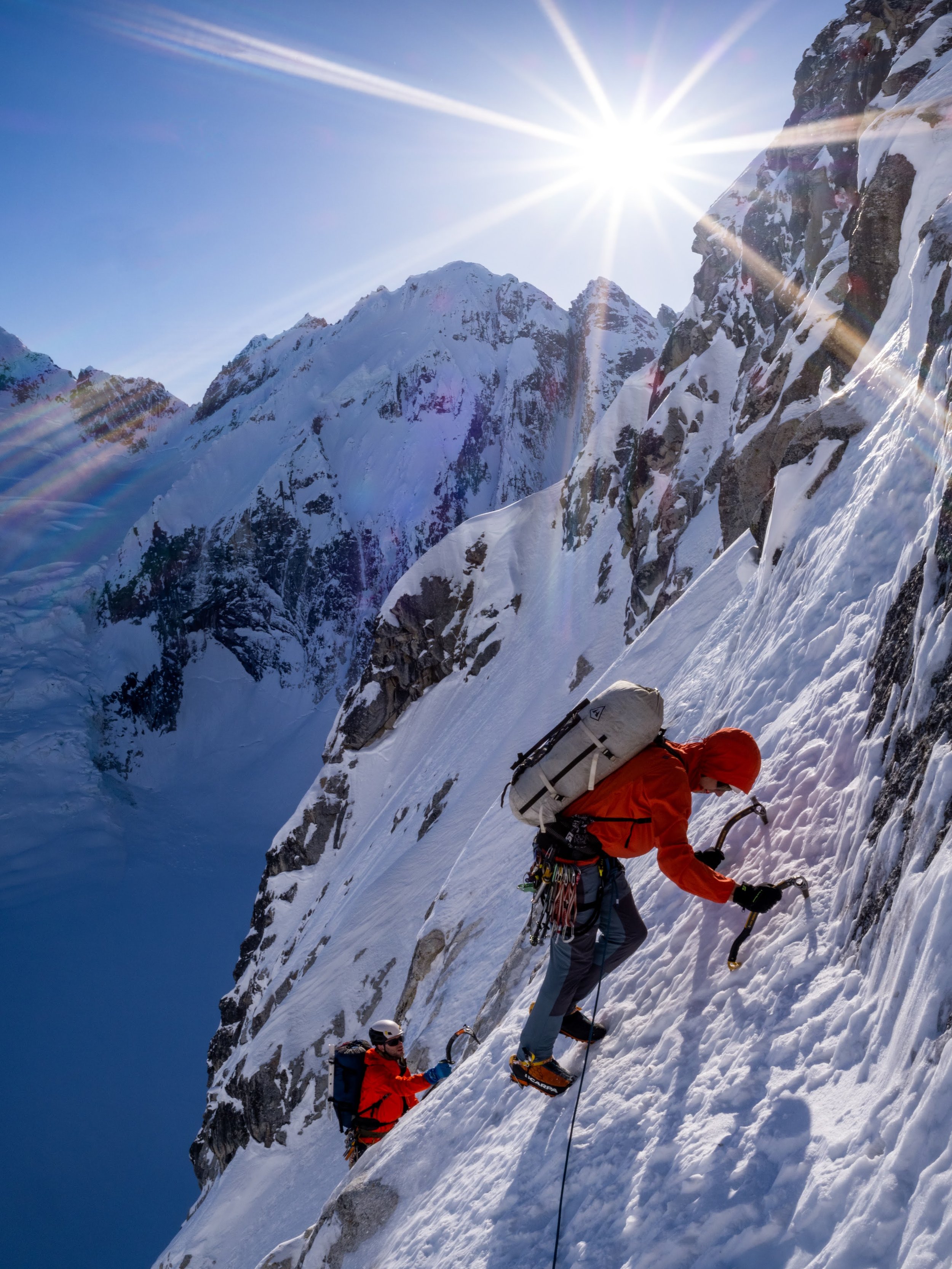Patrick Harrington is the manager of the Wyoming Office of Outdoor Recreation. We sat down with Harrington to dig into why AORA is imperative legislation to pass for all outdoor recreationists, and for sustaining the outdoor recreation economy at large. With his experience managing and advocating for recreation in one of the most sought after locations for US sport and adventure climbing, we learned a lot about how legislation like AORA can have a reverberating impact: on rural getaway communities, on the accessibility of climbing, on the economics of guiding, and more.
PROTECT: The New Bolt Wars? Protecting America's Rock Climbing in Wilderness
Are you up to date on what’s at stake in American Wilderness climbing?
Climbing in America’s Wilderness areas—places like Joshua Tree, Yosemite, the Black Canyon of the Gunnison, and so many other iconic climbing areas—is under threat. The bolting wars of old have been revived, but with a new inflection. It’s no longer sport climbers and trad climbers duking it out. Federal land managers feel cornered by increased usage on our public lands...and are arguing its necessary to ban the use of fixed anchors. But this is in conflict with climbers, who know that fixed anchors have always been allowed in Wilderness and prohibiting them will not resolve this issue, but only present new ones. While normally climbers and land managers are partners, this disagreement over fixed anchors in Wilderness is a strong threat to our ability to work together. So what exactly is this bolting war about, and what’s at stake here?
In this episode, the AAC sat down with Erik Murdock, the Vice President of Policy & Government Affairs at Access Fund, to talk about the nitty gritty details of this critical conversation about bolting and fixed anchors in Wilderness. We also cover the Protect America’s Rock Climbing Act (or PARC Act), which will help climbers preserve climbing in Wilderness as it has been historically protected, and continue to partner with land managers to conserve the public lands we all love.
Take Action! Help us protect Wilderness Climbing!
Get your legislators to support the PARC Act and protect Wilderness climbing!
The American Alpine Club Announces 2023 Cornerstone Conservation Grant Recipients
A trail worker from Save Mount Diablo. Photo provided by Save Mount Diablo.
April 2023
The American Alpine Club and REI are pleased to announce the 2023 Cornerstone Grant recipients. The AAC Cornerstone Conservation Grant was formally launched in 2011 to fund projects to improve, conserve, and protect local climbing resources nationwide. Seven local climbing organizations (LCOs), land managers and agencies, nonprofits, and individuals have been awarded a total of $25,000 for this grant cycle, for projects such as building or improving trail networks to climbing areas; establishing new toilet facilities and signage at trailheads; and deploying a variety of community groups for clean-up and graffiti removal at local crags.
Summersville Lake, West Virginia.
New River Alliance of Climbers will receive $5,000 for the Whippoorwill Restoration Project in Summersville Lake, West Virginia. All funds will go towards purchasing materials needed to complete the project: gabions, stone stair treads, split rail fence, and seeds for re-vegetation.
Carolina Climbers Coalition will receive $4,000 for the Table Rock Climbers Trail Rehabilitation in Table Rock, Linville Gorge, North Carolina. Funds will be used to rehabilitate the Table Rock Climbers Trail, a new NEPA-approved trail to a historical climbing area.
Northwest Montana Climbers Coalition will receive $1,000 for the Stone Hill Signage Project in Lake Koocanusa, Montana. Funds will be used for signage materials and installation tools.
Workers from the Stone Hill Trail Network Project doing restoration work. Photo provided by Stone Hill Trail Network.
Black Folx Rock will receive $5,000 for the Diversity in Conservation Project in Papago Park, Arizona. Funds will be used to create a trail, restoration, clean-up, signage, bridge creation, and erosion reduction for a heavily used rock climbing area.
Save Mount Diablo will receive $5,000 for the Pine Canyon Cleanup & Mount Diablo Adopt-A-Crag at Mount Diablo State Park, California. Funds will be used for equipment rental, fuel for equipment, PPE for volunteer participants, materials and tools for graffiti and litter removal, and limited staff time.
Upper Peninsula Climbers' Coalition will receive $2,000 for the Slugg's Bluff restoration in Palmer, Michigan. Funds will be used for gravel, road grading, trail work, and fencing for the community garden.
Mount Diablo State Park, CA
Western Massachusetts Climbers Coalition will receive $3,000 for a trail steward program in Farley Ledges in Erving, Massachusetts, Hanging Mountain in Sandisfield, MA, and other locations in Western MA. Funds from the AAC Cornerstone Grant will pay for training for trail leaders and volunteers, cover the cost of a volunteer tracking and waiver system, buy miscellaneous tools and materials, and pay the cost of a part-time paid operating executive to manage the program.
Applications for the Cornerstone Grant are accepted each year from October 1 through December 31.
Contact:
Shane Johnson, Chief Marketing Officer: sjohnson@americanalpineclub.org
Eddie Espinosa, Community Programs Director: eespinosa@americanalpineclub.org
From the AAC Policy Desk
This brief update from your AAC policy team covers lobbying on The Hill, the new make-up of Congress due to the midterms, and some bills that we’re prioritizing in our policy work this year. If you ever wonder….what is the AAC doing in the federal policy realm to help support public lands? This article gives you a quick update on our most recent efforts.
From Active Duty to Activism
The AAC’s New Government Affairs Liaison Flips the Script on Advocacy
By Gov’t Affairs Liason, Byron Harvison
“My journey to activism wasn’t really about me but rather about continued service to others. Climbing, a “past-time” that helped me discover who I was, became a passion. That passion enabled me to help other Veterans overcome hardship and ultimately led to a career in working on policy matters that impact climbers throughout the country. “ —Byron Harvison
Introducing our new Government Affairs Liaison! Joining the AAC’s policy team is Byron Harvison—a veteran, lawyer, and long-time volunteer with the American Alpine Club. In this article, he shares how he got involved with climbing advocacy, and how he’s seen it grow and explode throughout the years.
The Power of a Name: Protecting the Dolores River Canyon
by Sierra McGivney
PC: AAC Member John Fitzpatrick (Grumpyhighlander Photography)
“There’s a saying in Colorado that whiskey is for drinking and water is for fighting over,” says Widen.
The AAC sat down with Jeff Widen, an advocate behind the efforts to preserve Colorado’s Dolores River Canyon, to learn about the climbing, fishing, whitewater rafting and so much more that happens there, and why it needs to be protected as a National Conservation Area. This article delves into the complexities of preserving public land in a way that is helpful for all stakeholders, and what you can do to help preserve the Dolores River Canyon.
Gathering Place: Tommy Caldwell Reflects on Protecting Oak Flat
by Tommy Caldwell
PC: AAC Member Dawn Kish
“Climbers slipped on tattered Gramicci pants and duck taped down jackets, unzipped themselves from tents or crawled out of the back of pickup trucks. Like cattle coming in for their morning feed, everyone wandered down to the start line. It was 1994, and this ragtag crew represented America’s cutting edge. Despite its scrappy appearance, The Phoenix Bouldering Contest was the biggest bouldering competition in the world and the energy was buzzing. “ —Tommy Caldwell
In this article, Tommy Caldwell remembers the early days of outdoor comps at Oak Flat, AZ, and what it means to take action to protect the places we love. Tommy’s article explores what’s at stake in losing Oak Flat to copper mining, and what we as climbers can do to ensure Oak Flat is protected for the San Carlos Apache Tribe, for the sake of the environment, and for the classic boulders and climbing there.
Summit Register 007
In our most recent issue of the Summit Register, the AAC’s policy zine:
Tommy Caldwell reflects on the old days of boulder comps at Oak Flat, and why climbers need to take action to permanently protect Oak Flat from a devastating mining operation;
We cover the efforts advocates are taking to preserve the Dolores River Canyon for climbing, whitewater, fishing, and much more;
And finally, Byron Harvison (the AAC’s new Gov’t Affairs Liason!) reflects on his journey from active duty to activism within the climbing community.
Support this Work!
Economic Impact Report: 2020 Ouray Ice Festival
PC: Laurel Myers. Climber: Taylor Luneau
Climbing, and outdoor recreation in general, has important (and often positive) impacts on local economies that are near destination climbing areas. Quantifying our economic impact as climbers can help us replicate these impacts across the country, and make sure recreation has positive impacts, even for those who aren’t outdoor recreationists themselves. Finally, economic impact studies like this one allow the AAC to communicate our political power to lawmakers when we are advocating for issues that matter to climbers.
Our Policy Director, Taylor Luneau, teamed up with leading researchers Dr. James Maples and Dr. Michael Bradley, who conduct economic impact studies and outdoor recreation research across the nation, to identify tangible impacts of ice climbers traveling to Ouray county. The AAC worked with Ouray Ice Park, Eastern Kentucky University, and The Center for Economic Development, Entrepreneurship, and Technology, to conduct this study. Dive in here, to explore this research that quantifies the economic impact of the 2020 Ouray Ice Festival on Ouray County.
Summary of Findings
This study examined the economic impact of the 2020 Ouray Ice Festival which occurred in Ouray, Colorado on January 23-26, 2020. In all, 5,000 persons participated in the event. Major findings of this study include:
1. Participants living outside Ouray County spent an estimated $808,359 in Ouray County while at the Ouray Ice Festival.
2. Participants living outside Ouray County generated $349,843 in labor income in Ouray County as a result of the Ouray Ice Festival.
3. Participants living outside Ouray County spent around $130 on day visits, while persons staying overnight spent an additional $96 on motels/hotels or $25 on cabin/AirBnB use.
4. Participants focused nearly all of their expenditures inside Ouray County rather than the surrounding area.
Become an AAC Member or Renew Your membership today!
PROTECT: Vote the Crag this November
We’re sending it to the polls this midterm election….are you? In this mini-episode of the podcast, we sat down with the AAC’s Policy Director to discuss voting in the midterms this November, including important issues for climbers to consider, like public lands bills, climate change legislation, and judicial appointees. We keep it short and sweet since we know it can be overwhelming. So sit tight for the quick hits!
Summit Register 006
In this issue of Summit Register, we give you beta on voting as a climber in the 2022 midterms; the Climbing Wall Association reflects on policies and legislation impacting climbing gyms; and the AAC explores the big question: Should climbing be political?
It's In the Air: On Politics and Climbing
AAC member Dawn Kish
A Climber's Voter Guide
Vote the Crag: The Beta for the 2022 Midterm Elections
by AAC Policy Director, Taylor Luneau
AAC member Jeremiah Watt
Vote the Gym: The Climbing Wall Association Reveals the Policies that Impact Indoor Climbing
by Director of Standards and Regulatory Affairs at the Climbing Wall Association, Garnet Moore
AAC member and Twin Cities BIPOC Initiatives Chair Rodel Querubin
PROTECT: The Climber’s Advocacy Network
I’m just one person…what can I do?
Turns out, quite a lot—if you have the resources and support to join together with other climbers. That’s why we’ve created the Climber’s Advocacy Network (CAN).
GA CAN member, Reese Rogers
CO CAN member, Sam Masters
In this episode, we sat down with two individuals that love climbing—and just can’t stop themselves from getting involved in their climbing community. They have joined the Climber’s Advocacy Network and are advocating for issues that impact climbers near them. Sam, from the Colorado hub of CAN, and Reese, from the Georgia hub of CAN, discuss what motivates them and what they’ve been learning from participating in the Climber’s Advocacy Network. We also sat down with grassroots campaign consultant Skye Schell to help us contextualize the potential and possibility of the CAN within outdoor advocacy at large. Dive in and explore how climbers at the AAC are fighting the good fight to protect their local public lands and build equitable access to the outdoors.
American Alpine Club and Winter Wildlands Alliance Celebrate Restoration of Key Components to NEPA
Photo by @ofallnationsmedia
The American Alpine Club (AAC) and Winter Wildlands Alliance (WWA) are pleased to announce that the Biden Administration took an important step towards restoring critical parts of the National Environmental Policy Act (NEPA), a bedrock environmental law.
Over the past two years, our #ProtectNEPA campaign has fought to protect wild winter landscapes and climbing areas across the country. Together, we sued the Trump administration for gutting NEPA in 2020 and then petitioned the Biden administration in 2021 to take action to repair the law by restoring critical regulatory requirements that were removed in 2020.
The White House Council on Environmental Quality heard our requests, and began a two phase process to reverse the damaging 2020 changes to the regulations that implement NEPA. This week, the CEQ published a final “Phase 1” rule effectively overturning three parts of the 2020 Rule, restoring key pieces of NEPA and requiring that federal agencies:
Consider the direct, indirect, and cumulative effects of a proposed project, including an analysis of how greenhouse gas emissions from an action may impact climate change;
No longer prioritize the goals of an applicant over the public interest when developing the Purpose and Need or alternatives of a proposed action;
Give the public a greater voice in the environmental review process for projects on federal lands;
Consider the regulations as a “floor” and not a “ceiling” when considering the value of more protective regulations.
The final rule announced on Tuesday, April 19, 2022, will take effect on May 20, 2022, but it only restores some of the provisions from the original 1978 regulations. The AAC and WWA encourage the CEQ to act quickly in tackling Phase 2 of restoring NEPA, where they must consider how to correct the broader procedural changes to the regulations. We urge the CEQ to ensure that the voices of communities most impacted by environmental harm, as well as the commitments of the administration to address the climate crisis, are accurately reflected in their final rule.
Photo by Jeff Deikis
“This Phase 1 Rule is an important first step in restoring NEPA”, said Hilary Eisen, Policy Director with Winter Wildlands Alliance. “We look forward to continuing to work with the CEQ as they move forward into Phase 2, to ensure that NEPA continues to give the public a voice in federal decisions and provide environmental safeguards for generations to come.”
“Efforts from the previous administration to dismantle NEPA left our public lands, communities and climate vulnerable to ill-informed and biased decision-making processes,” said Taylor Luneau, Policy Manager for the American Alpine Club. “This is a significant win for the outdoor recreation community and an important step towards restoring the strength and potential of NEPA to address our nation's most pressing environmental needs.”
We are grateful to the many thousands of outdoor advocates who took action to #ProtectNEPA and look forward to continuing to partner with the Biden Administration to ensure that the interests of the climbing and backcountry skiing communities remain front of mind in federal decision making.
Contact for more information:
Taylor Luneau, Policy Manager, American Alpine Club, tluneau@americanalpineclub.org
Hilary Eisen, Policy Director, Winter Wildlands Alliance, heisen@winterwildlands.org
Advocacy In Action: Reconciliation is Back!
In the midst of the action scoping out the exposure below. AAC member Savannah Cummins
By AAC Advocacy and Gov’t Affairs Manager, Amelia Howe
This article originally appeared in Summit Register 005.
I know what you are thinking, but no, you are not having a deja vu moment. There is momentum building behind the reconciliation package, but this time, it’s focused solely on climate and conservation investments. We need you and the collective climbing community to write to your lawmakers in support of these critical climate investments in order to get this passed and enacted into law as soon as possible.
The American Alpine Club and other organizations like the Outdoor Alliance spent a lot of time in 2021 educating our members and advocating for the passage of a major social spending package, better known as the Build Back Better Act. While the original package was full of things like universal pre-K and affordable healthcare, the AAC worked to support this package due to the myriad investments that would address the climate crisis and improve public lands infrastructure. Summit Register 004 contains an article outlining how this package fell apart right before the New Year due to Congress’ inability to reach a consensus surrounding the importance of these investments. This political rollercoaster led many to believe that there was no hope for the passage of Build Back Better. Now that lawmakers are back from winter break and diving into a midterm election season, it is clear that hope remains for important aspects of Build Back Better. There is especially exciting potential for the $555 billion to be invested in climate and public lands provisions.
Some of these provisions include efforts to:
+ Conserve threatened landscapes
+ Create climate adaptation plans within the Forest Service so they can better address how changing temperatures are impacting natural resources
+ Dedicate additional National Environmental Policy Act (NEPA) resources for agencies
+ Better resource wildfire planning and response
+ Address and reform fossil fuel development processes on public lands
+ Fund climate resilience projects on public lands
+ Invest in urban parks and trail systems
+ Increase access to public lands and trails
+ Create a Civilian Climate Corps
PC: AAC member Calder Davey
Climate change and aging public lands infrastructure should be at the top of mind for climbers when it comes to issues to address and advocate for in 2022. From a climber’s perspective, changes in climate will undoubtedly impact access to climbing and will, in turn, negatively impact the recreation economy. Inconsistent and longer wildfire seasons impact access to outdoor climbing opportunities during the summer and fall, and ice routes that once were classic are now rarely seen. It is easy to identify how our collective inability to act on climate will impact the sport. But the impacts of climate change touch every aspect of life, and these impacts on climbing are only a small piece of why these investments are so important.
An investment of this nature could change the trajectory of the US’ response on climate change, and the impacts will be deeply felt at the local community level. If you are excited about the prospect of these critical investments in climate action and public lands restoration, this is the moment to let your lawmakers know.
Durango Climbers Join Forces
A Cornerstone Conservation Grant Story
By Luke Mehall, Publisher of The Climbing Zine
& Taylor Luneau, AAC Policy Manager
This article originally appeared in Summit Register 005.
Grant Perdue feeling the water below on Close to the Edge, 5.11+ at Cascade Canyon. AAC member Will McKay
The Durango Climbers Coalition (DCC) started with a single issue: we wanted to secure a local beloved sport and ice climbing crag called Cascade Canyon. We had learned that the land—which contains challenging limestone sport climbing, our only local ice climbing, and a beautiful waterfall—was located on private property.
Cascade Canyon is home to one of the most aesthetic climbs in Southwestern Colorado: Close to the Edge. Climbers drop into the deep canyon before traversing under a wide collection of technical roof climbs until eventually reaching Cascade Creek, where the pumpy 11c emerges from the water. In the winter, climbers cross the frozen creek to a small but challenging group of ice pillars and mixed climbs. On the best days, you can lace up your ice boots for a few pitches of ice before crossing the river once more to round out your day with a couple rock routes, basking in the Coloradan sun. Few climbing areas offer such a bounty for the climbing community—no matter the season.
How could we secure this land for public use forever? This question led us down a rabbit hole of climbing activism.
Since then, we’ve realized that the Durango climbing community has several issues that need to be addressed, ranging from trail work needs to organizing cleanups of graffiti and trash. But for local climbing organizations like the DCC to successfully manage these kinds of concerns, they need ample resources. Enter our application for the American Alpine Club Cornerstone Conservation Grant.
As much as Cascade Canyon needs protection, some of our other local climbing areas need some love. Animas Mountain, which contains several different climbing zones, and is a mere five minutes from downtown Durango, is at the top of the list. Bouldering is the main attraction with hundreds of blocks scattered in a zone climbers call Sailing Hawks. On the opposite side of the mountain rests X-Rock, containing an assortment of introductory routes and home to Durango’s local sandstone tower, perched high above the Animas River Valley. Excellent running and mountain biking trails provide access to the mountain’s summit and some of the city’s most aesthetic viewpoints.
Anika Bach enjoying her climb up X-Rock in Durango, CO. Land of the Diné Bikéyah, Pueblos, and Ute peoples. Grumpyhighlander photography
Last year, X-Rock was vandalized with several hundred square feet of graffiti, which led to a mobilization of the climbing community to clean it up. We’d previously teamed up with the City of Durango to clean up graffiti at Sailing Hawks, so we had a little bit of experience. This incident sparked action and built community, and the DCC led the way. After eight hours of effort, we restored the sweeping red walls of this scenic climbing area with the help of 18 local climbers, city and county officials, and a Colorado Springs based non-profit, Keeping Colorado Beautiful.
The problems with X-Rock were not over after the cleanup. Irresponsible public lands users have been trashing the area, leaving behind used needles, other forms of trash, and in one case, a gun.
The need for the grant was clear. Trail work and signage would be crucial as we fight to keep this public land safe and sustainable for climbers and other nature lovers. The 5k grant from the AAC will significantly assist with this endeavor. We will formalize the area with a climbers’ kiosk, reinforce eroded approach trails, and direct new climbers to their day’s objective with additional tail signage. This effort would not be achievable without the AAC’s support, along with the City of Durango and La Plata County.
We’ve had some progress on assisting with securing future access to Cascade Canyon. At the same time, we’ve realized the need for the Durango Climbers Coalition as an organization. This need will outlast any current member, and we are here to do the good work, with a lot of help from our friends at the American Alpine Club!
Updates From Your Policy Team: The Climber's Advocacy Network
By Advocacy and Gov’t Affairs Manager, Amelia Howe
This article originally appeared in Summit Register 005.
Warming light near Sedona, AZ. Land of the Hohokam, Hopitutskwa, Yavapaiv Apache, and Jumanos peoples. AAC member Jeremiah Watt
At the American Alpine Club, it is no secret that the power of our policy and advocacy work is fueled by passionate climbers from across the country. They may be the policy chair of their local chapter, long-term AAC volunteers taking initiative to get involved in a climbing management plan, an AAC member flagging an issue happening at their local crag, or a climber hoping to learn how to create impact in their community. Regardless of who the individual may be or how they are connected to the Club, climbers are deeply engaged in policy and advocacy. We believe that change happens when everyday climbers unite around a shared cause and are positioned to advocate for the interests of their community. Therefore, over the past several months, the AAC policy department has been cultivating the inaugural Climbers’ Advocacy Network (CAN).
There has been a lot of impactful policy and advocacy work happening in AAC chapters across the country. We hope to be better allies of these individuals and provide them with the education and resources they need to be more effective in their local communities. To kickstart the program, we observed where this work was already happening and where volunteers were most excited to engage in policy and advocacy efforts. Through interviews with climbers and gathering data from our Annual Climber’s Survey, we landed on these initial hubs: California, Colorado, D.C., Georgia, New England, Utah, and Washington.
We are in the process of recruiting volunteer teams and creating a Climbers’ Advocacy Curriculum. This curriculum will enable our climbing advocate volunteers to enhance their policy and advocacy skillsets and ultimately take on projects in their local communities.
The Ultimate Dream for the CAN:
Meadows in Yosemite National Park, CA. Land of the Me-Wuk and Numu peoples. AAC member Jeremiah Watt
+ Each AAC section and chapter has a CAN Chair or Policy Chair that will work closely with their local chapter, the AAC HQ, their local climbing organization, and other coalition partners to build conservation and climate capacity on a local level.
+ They will create campaign plans to address issues that matter most to climbers in their regions.
+ Campaigns + projects will be different from place to place because each community is unique and has its own strengths and weaknesses.
+ Projects could look like rallying climber support for a new Office of the Outdoors in your state or hosting voter registration nights at their local gym.
What ideas do you have for building local impact in your climbing community?
From our office in Golden, we know that we don’t have adequate context to tell our members what issues they should care about in their communities. It is critical that we listen to folks on the ground to find out how to best support critical climate and conservation work across the country, and that’s where you come in. Do you live in one of our CAN kickoff states and want to get involved? Let us know here.
Climber’s Advocacy Network Crag Tour
Stunning ambiance of Dead Horse Point, UT. Land of the Ute people. AAC member Jeremiah Watt
Damon Yeh
CAN Hub: California
What are your local climbing spots?
I currently live in San Diego, CA, and you can usually find me at the Mesa Rim climbing gyms. On weekends, I try to make my way out to Joshua Tree NP, but if I only have a half-day free, Mt. Woodson is one of my favorite spots.
How would you describe your relationship with climbing?
Climbing has provided me with many opportunities and helped me build a lot of meaningful relationships. I am less interested in pushing grades. Rather, I find joy in exploring nature and hanging out with the people I care about.
If there was a book written about you and climbing, what would it be called?
“Never Too Proud to Top Rope!”
Are there any particular issues you think your region will be focused on at this point?
Shingo Ohkawa bouldering in Joshua Tree National Park, CA. Land of the Western Shoshone and Serrano peoples. AAC member Andrew Burr
There is a lot to cover in the state of California! Fifty-two percent of the state is public land, and the vast majority is federal land. I am most concerned about making sure everyone has equitable access to nature. Not everyone feels they have a place on our public lands or that they have a voice in how we manage them. My goal is to break down barriers for everyone to get more involved with our public lands.
Why should climbers in your region volunteer with you to build CAN Capacity?
Climbers should volunteer with me because I want everyone to have a seat at the table. California is a big state, and we need all hands on deck to build a sustainable and equitable future!
Elliot Becker
CAN Hub: Washington D.C.
What are your local climbing spots?
I’m living in the Brookland neighborhood of Washington, D.C. My home crags are Seneca Rocks and the New River Gorge.
How would you describe your relationship with climbing?
I really love all aspects of climbing. While my favorite is long rock routes, the advent of COVID and the arrival of a new baby have turned me into a more dedicated boulderer of late.
Why are you excited to gain more advocacy and policy skills?
I’ve long taken the view that whatever you care about, you should organize to improve. I care a lot about climbing, so I want to do what I can to enhance the situation here. I’m particularly looking forward to increasing my ability to talk to elected leaders.
The New River Gorge. Land of the Moneton, Tutelo, Yuchi, and Shawandasse Tula peoples. AAC member Francois Lebeau
Are there any particular issue areas you think your region will be focused on at this point?
The D.C. area has a lot of people and not a lot of good rock, so we need to do what we can to improve and maintain access throughout the region. We need to be alert to any opportunities to expand access and any threats to access while also improving organization and infrastructure to support higher numbers.
Reese Rogers
CAN Hub: Georgia
What are your local climbing spots?
I live in Decatur, GA, just east of Atlanta. I boulder at Boat Rock in Atlanta and enjoy the crags around Chattanooga like Tennessee Wall and Foster Falls. I also climb at Stone Summit gyms in the Atlanta area.
How would you describe your relationship with climbing?
For me, climbing is a way to experience landscapes from a new perspective and a reason to explore my local region and learn more about it. I was an avid backpacker before I was a climber, and climbing initially appealed to me when I realized I could go up mountains instead of just walking around them. This exploration aspect of climbing is essential to me and part of the reason I enjoy everything from bouldering to ski mountaineering.
Why are you excited to gain more advocacy and policy skills?
Squeezing their way up Bumboy (V3) during the Float the Boat compeition at Boat Rock in Atlanta, GA. Land of the Muscogee and East Cherokee peoples. Kate Okenatez-Mahoney
I’ve worked on energy and climate issues throughout my career. It has always been difficult to disentangle discussions around energy production, climate change, public lands management, and, increasingly, outdoor recreation. I am glad to see the AAC wrestling with these larger issues that affect this passion of ours, and I want to contribute to these discussions more. The opportunity to learn advocacy skills alongside others who share a passion for climbing is a big motivator. Climbing definitely heightened my awareness of local public lands management issues and specific climate change impacts globally.
Are there any particular issue areas you think your region will be focused on at this point?
Access and awareness of climbers as a user group seem to be perennial issues in the Southeast. We don’t have large swaths of federal public lands in the South (at least with climbing), so much of the climbing is in state-managed parks or on private lands where access has been negotiated with the landowner. Fortunately, we have amazing LCOs in the Southeastern Climbers Coalition and the Carolina Climbers Coalition. They do great work creating and maintaining access and promoting stewardship. As climbers grow as a user group, we will need to ensure that state and regional policies and resources match the increasing use of these typically under-resourced areas.
Alma Baste
CAN Hub: Utah
What are your local climbing spots?
I just moved to Salt Lake City! So I guess Little Cottonwood Canyon would now be my local crag.
How would you describe your relationship with climbing?
Complicated. It’s definitely a love/hate relationship somedays. Overall though, I really love the sport. I love the community, and the way you can meet new people and make friends regardless of where you live. I’ve met so many new people during my solo sessions at Rocktown. Beyond that, I love the mobilization climbers have in terms of stewardship and advocacy. When we’re really passionate and care about something, we go for it with the same intensity that we have for pursuing climbing objectives.
If there was a book written about you and climbing, what would it be called?
“The Ghost at Nose Candy”—I’ve had several people recognize me from working that boulder so much this past season; it’s almost embarrassing, but it is a magnificent boulder. And I love spooky stuff.
Why are you excited to gain more advocacy and policy skills?
My first trip to Indian Creek was shortly before it became part of Bears Ears National Monument. After the monument was rescinded, I became more and more aware of the need for advocacy surrounding climbing areas. Since then, I’ve pursued a master’s degree in Environmental Policy. The Climber’s Advocacy Network seemed like an excellent opportunity to gain even more skills, especially outside of a university, and focus on more local issues—like getting climbing included in management plans for different wilderness areas.
Jimmy Keithley, Vultures are Waiting 5.8,
The Cobblehorn, City Creek Canyon, UT. Land of the Goshute and Eastern Shoshone peoples. AAC member Andrew Burr
Are there any particular issue areas you think your region will be focused on at this point?
I’m still learning the SLC issues and building connections with local stakeholders like the Salt Lake Climbers Alliance, but I know the threat of a gondola or road expansion projects in Little Cottonwood Canyon has been a big subject lately. Both projects result in the destruction of popular bouldering areas throughout the canyon. Neither of them does much to improve the issue they intend to solve.
Why should climbers in your region volunteer with you to build CAN Capacity?
Because I can’t do this alone! And while I am incredibly obsessed with Utah, I’m by no means a local and would love to have the expertise of someone who’s been here far longer than me.
Daniel Kroth
CAN Hub: New England
What are your local climbing spots?
I live in Cambridge, MA. Brooklyn Boulders Sommerville is my local gym.
How would you describe your relationship with climbing?
I think many climbers like to solve puzzles on and off the wall, test themselves physically, and explore the edges of their comfort zone. Like most of us, I feel as though my life can largely be divided into intellectual, physical, and emotional or expressive pursuits. One of the things I love most about getting outside to climb is combining these three facets of myself to approach new challenges.
Why are you excited to gain more advocacy and policy skills?
A beautiful day to boulder with Kai Lightner at the Gunks in New York. Land of the Munsee Lenape People. AAC member Chris Vultaggio
I’m excited because this stuff matters! I was able to build a meaningful connection to the outdoors in large part because easy access and low costs made it possible for my family to get outside. I want to build the skills necessary to help preserve this access and expand it to others.
Are there any particular issue areas you think your region will be focused on at this point?
Here in the Northeast, I think we have an excellent opportunity to advocate for equitable access to outdoor recreation. Of course, climate change awareness will be of paramount importance across the Club. With popular support for both initiatives in our region, we’re well-positioned to make an impact.
Why should climbers in your region volunteer with you to build CAN capacity?
Whether you’re in the area for school or grew up with a local crag, this group can help you build the skills and connections to advocate for issues important to you. We’re looking for teammates to think through the issues, keep a finger on the pulse of the local climbing community, and connect ideas to advocacy.



